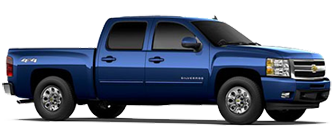Tire Sizes Explained
Although the most common sizing code used is the ISO Metric sizing system, some pickup trucks and SUVs use the Light Truck Numeric or Light Truck High Flotation system. For more information on this code,call or Email Shumaker Tire.
Size information is embossed on the side of tires. Read below, and next time you look at your tires, you'll know right away what all that embossed information means. Of course, can stay at your computer and use our tire fitment guide to see which tires you need. Here's what that tire information is telling you:
CLASS The first character(s) in a tire size tell you its class. "P" stands for passenger car tire and "LT" stands for light truck tire.
WIDTH The first number indicates the width of the tire, in mm from sidewall to sidewall.
ASPECT RATIO The second number indicates the height of the tire as a percentage of its width. So for a tire that has an aspect of 60, it means the tire’s height is equal to 60% of its width.
TIRE CONSTRUCTION The letter after the height value indicates the construction used within the tire’s casing. The most common passenger and light truck tires uses radial (‘R’) construction, while some tires may use belted bias (‘B’) or diagonal bias (‘D’) construction.
WHEEL DIAMETER The number after the construction value shows the diameter of the wheel rim in inches.
LOAD INDEX The first number after the tire size is the load index of the tire. It's very important to maintain the proper load index for your vehicle when replacing your tires. Call or email one of our technicians for more specifics.
SPEED RATING The final letter provides the speed rating of the tire, which is the maximum speed the tire has been designed to handle. Again, call us if you have any questions about the appropriate speed rating for your new tires.
Now that you have all the information, stop by, call, or order your new tires online.



